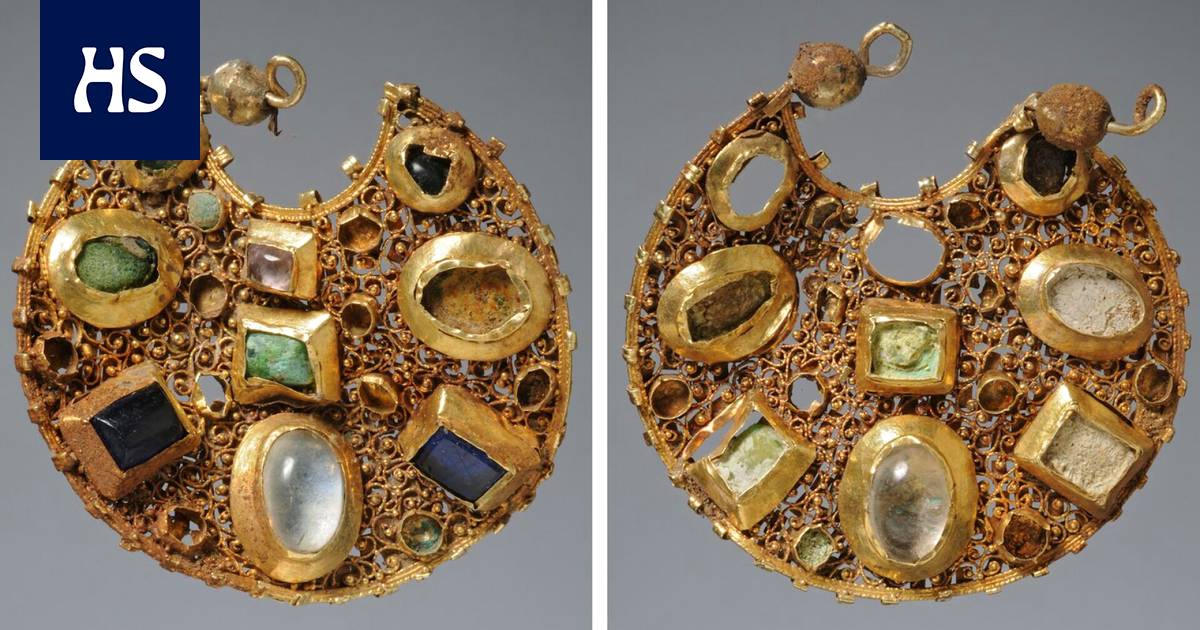The most significant part of the find are two golden Byzantine earrings decorated with gemstones.
Voluntary the trainee made a significant archaeological discovery in the vicinity of the ancient Viking town of Hedeby when he was learning how to use a metal detector.
Nicki Andreas Steinmann was completing a metal detector exam, and only used a metal detector for the third time under the guidance of his instructor, when he found silver coins and gold objects.
An excavation was carried out under the direction of an archaeologist alerted to the site, which revealed a treasure that is about 800 years old, says the archaeological office of the German state of Schleswig-Holstein on their website in the bulletin published in February.
To the treasure being found in Northern Germany was reported, among other things Live Science and Miami Herald.
“The treasure contained two very high-quality gold earrings with gemstones embedded in them. In addition, several gold and gilded jewelry and rings were found. There were about thirty silver coins in the treasure, some of which had broken into pieces,” said the head of the Schleswig-Holstein State Archaeological Office Ulf Ickerodtfor Live Science.
Among the treasures, there was also something special, because the brooch that served as a buckle for a cloak or robe was made from an imitation of a coin. The model of the gilded coin was the gold dinar of the Almohad ruling family. In the 1100s and 1200s, the Almohad Caliphate ruled southern Spain and large areas in North Africa. Coins were often made into jewelry in the Middle Ages and even earlier.
Of coins there were scraps of cloth in it, so the treasure is probably buried in a sack or bag. According to Ickerodt, the treasure is specifically hidden, and it has not ended up in the discovery place by chance.
Ickerodt says that the golden earrings were made around the year 1100 and they were made by Byzantine or Eastern Roman goldsmiths.
Silver coins are minted by the King of Denmark Valdemar II Sejrin reign (1,202–1,241), so the treasure was buried during or after that reign.
Hedeby was located in the southern part of the Jutland peninsula on the coast of the Baltic Sea. The city was at an important crossroads of trade routes, because through the nearby Treenejoki you could reach the North Sea without going around all of Jutland.
Hedeby was the second largest city in the Nordics during the Viking Age. In historical sources, Hedeby is first mentioned in the Frankish Einhard’s in the chronicle in 804, but the city was founded perhaps already in the 7th century.
Because of its favorable location, Hedeby was an important trading post, mentioned in English, German and Arabic sources that have survived to this day.
The reverse side of a Byzantine earring.
King of Norway Harald Ankara looted and burned Hedeby in 1050. The Slavic venids completed the destruction of the city in 1066, after which the hard-hit Hedeby was gradually abandoned for good. In the same year, Harald Ankara fell with an arrow in his neck at the Battle of Stamford Bridge while seeking the throne of England. The Viking Age is often considered to have ended in England with this battle in the city of York.
However, the recent discovery suggests that the importance of the area as a crossroads of trade routes did not end with the destruction of Hedeby. By the time the treasure was hidden, the population of the area had moved to the nearby city of Schleswig, which currently has a little over 25,000 inhabitants.
Hedeby was discovered at the end of the 19th century and the first archaeological excavations in the area began in 1900. Today it is a UNESCO World Heritage Site.
#Archeology #intern #extraordinary #gold #treasure #destroyed #Viking #city









